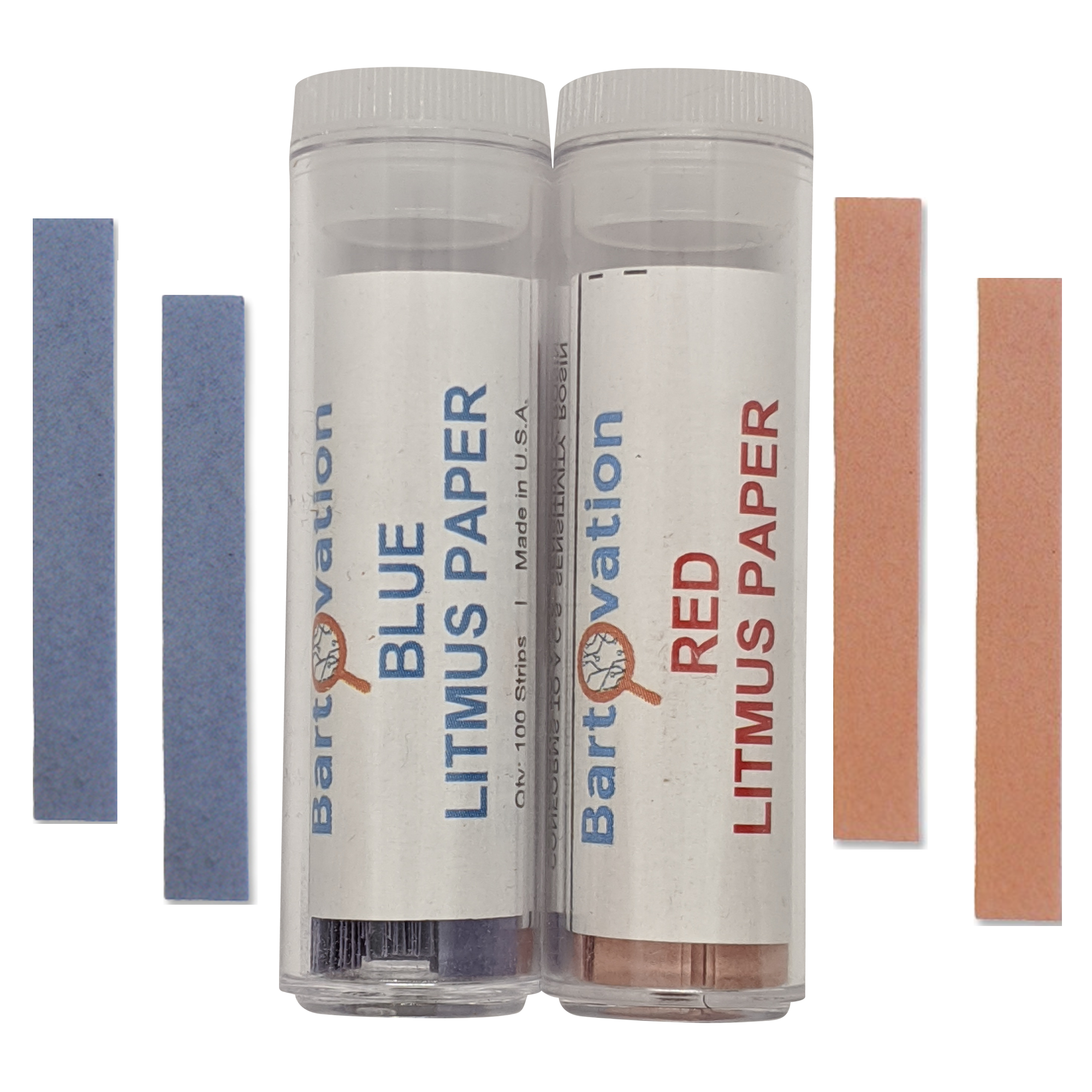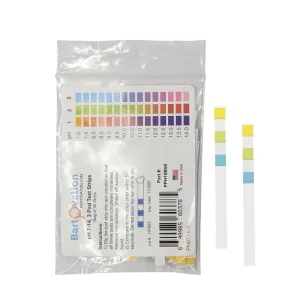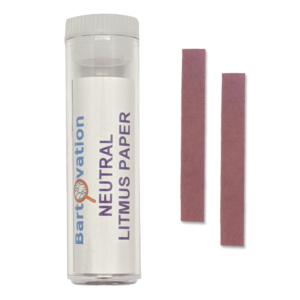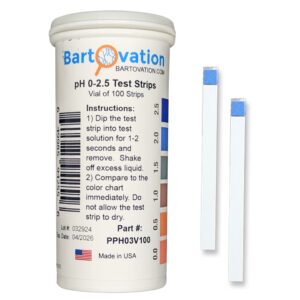Description
Students can test solutions for acid or base determination. Easy-to-use red litmus paper turns blue for bases and blue litmus turns red for acids. 100 strips of each. Not for measuring the pH of natural waters, such as streams, rivers and lakes.
Instructions:
- Remove one litmus test paper from the vial, being careful not to touch the strip anywhere other than where you grasp it.
- Dip the strip into the solution to be tested for 1-2 seconds and remove.
The red test strip will turn blue in seconds if dipped into a solution that is a base, and will remain unchanged if not. The blue test strip will turn red in seconds if dipped into a solution that is a base, and will remain unchanged if not.
How does litmus paper work?
Litmus paper works as a pH indicator by changing color when exposed to acidic or basic substances. This is due to the presence of lichens in the paper, which contain compounds that respond to the pH level of a solution. Litmus dye is extracted from lichens, organisms formed by a symbiotic relationship between a fungus and an alga. Unlike plants, lichens lack roots, stems, and leaves but thrive in diverse habitats, often in harsh environments. The natural color of litmus paper is blue. When placed in an acidic solution (pH less than 7), blue litmus paper turns red, indicating an acid. Conversely, red litmus paper, which is created by treating blue paper with an acid to make it red, will turn back to blue when exposed to a basic solution (pH greater than 7).
The color change in litmus paper results from chemical reactions involving hydrogen ions (H⁺) in acids and hydroxide ions (OH⁻) in bases. Acidic solutions have a high concentration of H⁺ ions, which are proton donors. When these ions interact with the litmus compounds, they cause the blue paper to turn red. Basic solutions, with a higher concentration of OH⁻ ions (proton acceptors), cause red litmus paper to revert to its natural blue color.
Litmus paper provides a simple, qualitative way to determine if a substance is acidic or basic. However, it does not provide an exact pH value, so for precise pH measurements we recommend using a universal pH test instead. You can learn about pH and the level of acidity in everyday household items here.



![Congo Red Test Paper [Vial of 100 Strips] for Qualitative Narrow-Range pH 3.0 to 5.2 Tests](https://bartovation.com/wp-content/uploads/2020/03/crmi-300x300.png)


